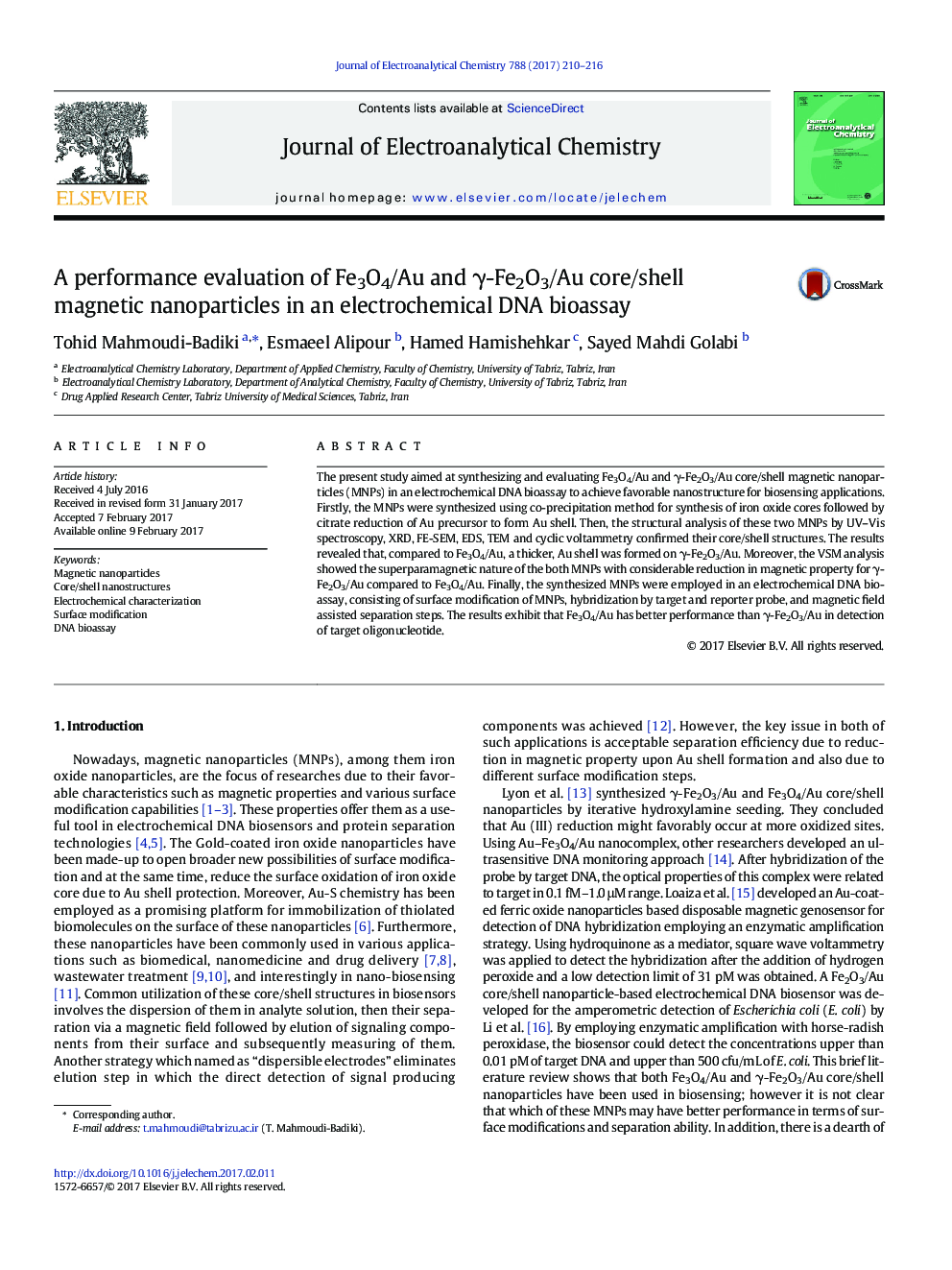| Article ID | Journal | Published Year | Pages | File Type |
|---|---|---|---|---|
| 4908005 | Journal of Electroanalytical Chemistry | 2017 | 7 Pages |
â¢Fe3O4/Au and γ-Fe2O3/Au core/shell magnetic nanoparticles were synthesized.â¢The structural analysis revealed a thicker Au shell formation on γ-Fe2O3/Au.â¢Considerable reduction in magnetic property for γ-Fe2O3/Au was observed.â¢A model electrochemical DNA bioassay was used to evaluate the nanostructures.â¢Fe3O4/Au showed better performance than γ-Fe2O3/Au in a DNA bioassay.
The present study aimed at synthesizing and evaluating Fe3O4/Au and γ-Fe2O3/Au core/shell magnetic nanoparticles (MNPs) in an electrochemical DNA bioassay to achieve favorable nanostructure for biosensing applications. Firstly, the MNPs were synthesized using co-precipitation method for synthesis of iron oxide cores followed by citrate reduction of Au precursor to form Au shell. Then, the structural analysis of these two MNPs by UV-Vis spectroscopy, XRD, FE-SEM, EDS, TEM and cyclic voltammetry confirmed their core/shell structures. The results revealed that, compared to Fe3O4/Au, a thicker, Au shell was formed on γ-Fe2O3/Au. Moreover, the VSM analysis showed the superparamagnetic nature of the both MNPs with considerable reduction in magnetic property for γ-Fe2O3/Au compared to Fe3O4/Au. Finally, the synthesized MNPs were employed in an electrochemical DNA bioassay, consisting of surface modification of MNPs, hybridization by target and reporter probe, and magnetic field assisted separation steps. The results exhibit that Fe3O4/Au has better performance than γ-Fe2O3/Au in detection of target oligonucleotide.
Graphical abstractDownload high-res image (151KB)Download full-size image
